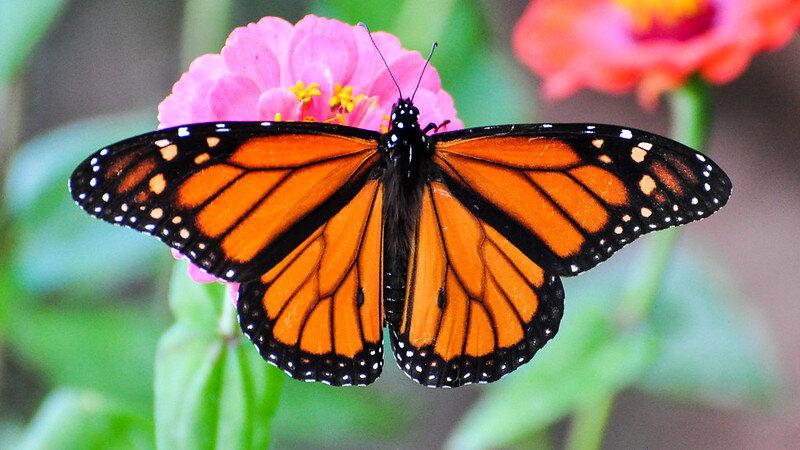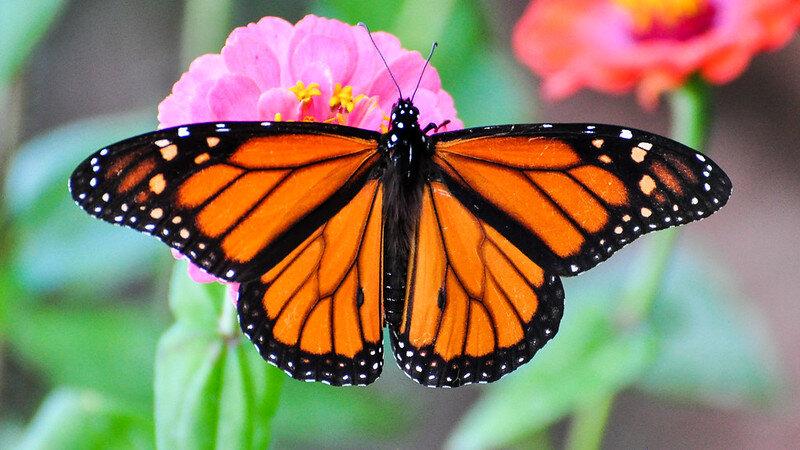Natural Ecosystems include all of the resources that humans have today. The life that lives in the soil and in the natural environment has sustained planet earth since life began to formulate. Nature doesn’t just include natural resources, ecosystems are what create diverse habitats for all living creatures. It is our social responsibility to protect our environment in order to create a habitable, hospitable, survivable world for all living organisms.
COURTESY // Peter Miller
The Monarch Butterfly population has seen a 99.9% decline since the 1980s. Megan Ashley, a curator at the Hallberg Butterfly Gardens in Sebastopol, said, “Monarch butterfly counts in the 1980s were 4.5 million, in 2020 the population was less than 2,000, for every 2,250 monarchs counted in 1980 would equal just one left today.”
Monarchs were already endangered species and were thought to go extinct when the population reached less than 30,000 butterflies, the monarch population has been less than 30,000 since 2019. The east coast has seen an 80% decline. These declines are due to climate, habitat loss among other variables. Butterflies are indirectly creating habitat for other types of wildlife, helping to conserve the ecosystems that exist and grow life as they migrate.
This is a very important reason why there is an effort to restore their natural population and it will require everyone’s support. Ashley explained, “Focusing on native species and creating corridors and sanctity of space to thrive.” Some solutions are to take hospitable potions of both public and private land, big and small, and try to create a lush environment for pollinators to continue their natural life.
With the decline in monarch butterflies, insects, invertebrates, honey bees and native bees, across the globe due to interacting stressors. People not only have the power to destroy the natural ecosystems, but people also have the power to reverse the decline of the insect population. “Yes we caused the issues but we can also have positive effects as well,” Ashley said.
There are ways to help, plant native flowers to Sonoma County. These could include Sonoma sage, baby blue eyes- otherwise known as nemophila menziesii, milkweed, Pacific hound’s tongue, lupins, Douglas iris, western blue-eyed grass, checker lily, California buttercup and more. Just including these plants in your garden could help the pollinators survive through the spring and help their populations begin to grow once again.
Ultimately it is people’s responsibility to be aware of their environment and understand that it is these natural wonders, such as butterflies, that helps sustain it. Humans have desecrated natural spaces for human life to thrive and have been selfish in not adhering to the balance of nature. Nature provides and people should sustain the flow of life, making sure that if the natural ecosystem is taken then it is replaced. The sanctity of life, the sanctity of the natural process, the balance with which nature creates or destroys and people choose to live within, it is society’s responsibility to preserve and sustain what nature we can.
Monarchs are in decline, however, there is still hope. Visit Xerces.org for more information on helping the butterflies and pollinators in Sonoma County. Sonoma County is a priority zone for overwintering species such as the Monarch Butterflies. It is crucial for Sonoma County residents to be aware and help protect the Monarch butterfly population, as well as other insects and invertebrates. So, plant native plants and flowers for pollinators, don’t use pesticides and help provide for a hospitable environment for the good of all nature’s creatures.





![[Both photos courtesy of sonoma.edu]
Ming-Ting Mike Lee stepped in as the new SSU president following Sakakis resignation in July 2022](https://sonomastatestar.com/wp-content/uploads/2024/04/CC4520AB-22A7-41B2-9F6F-2A2D5F76A28C-1200x1200.jpeg)



























